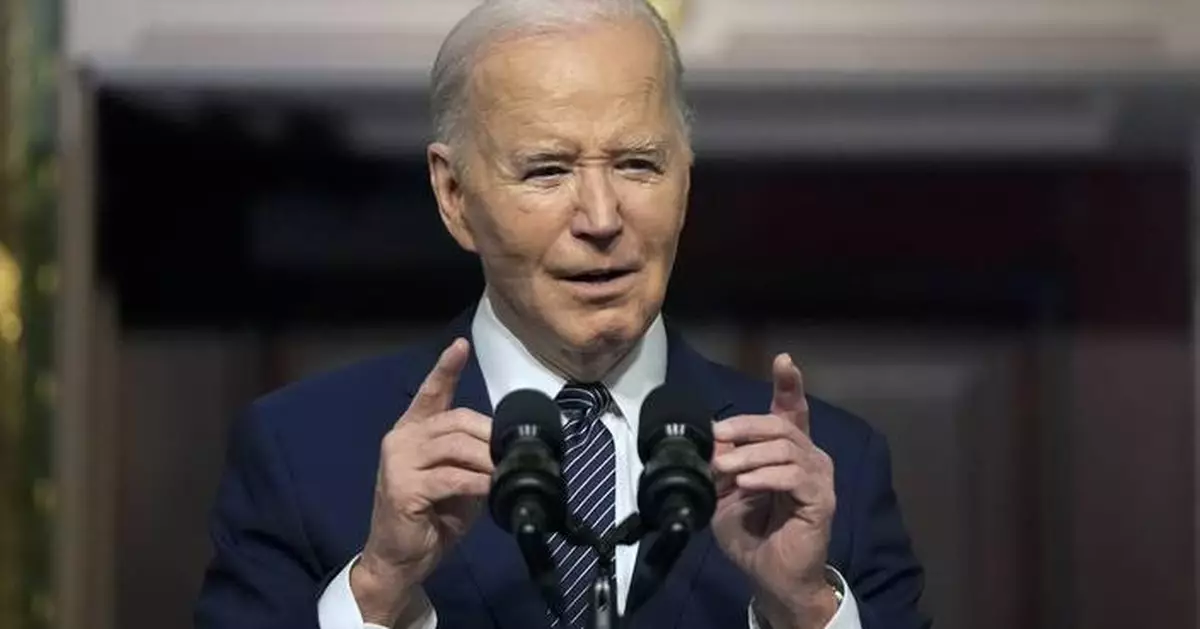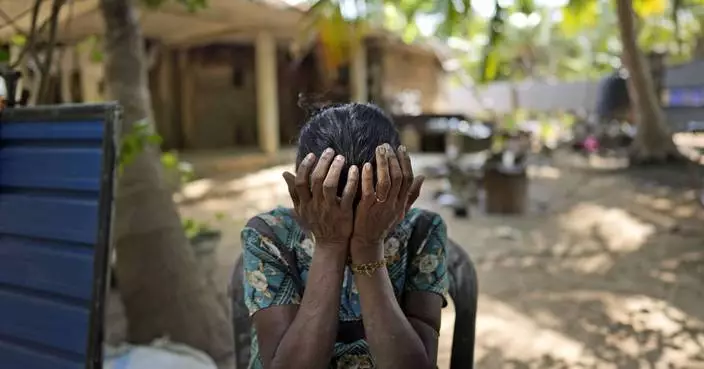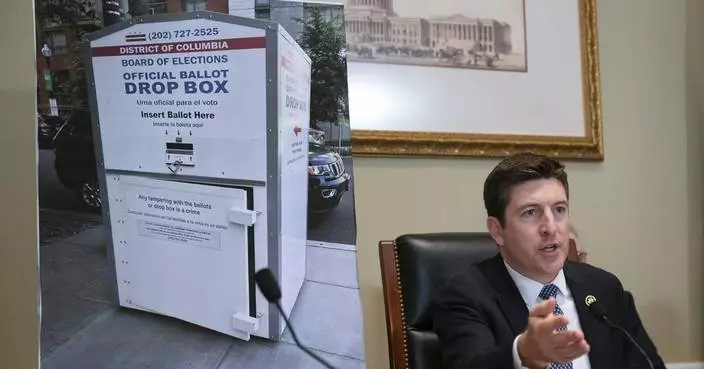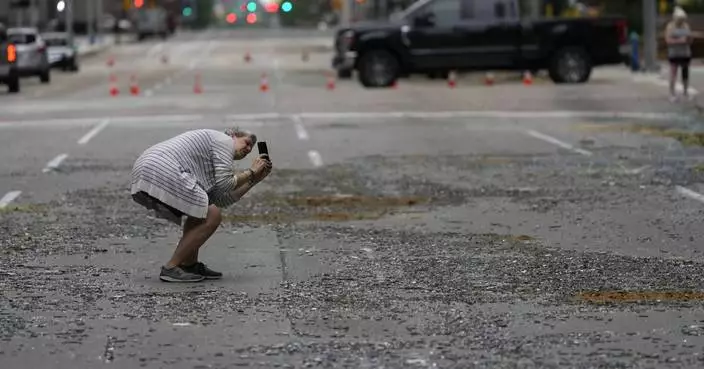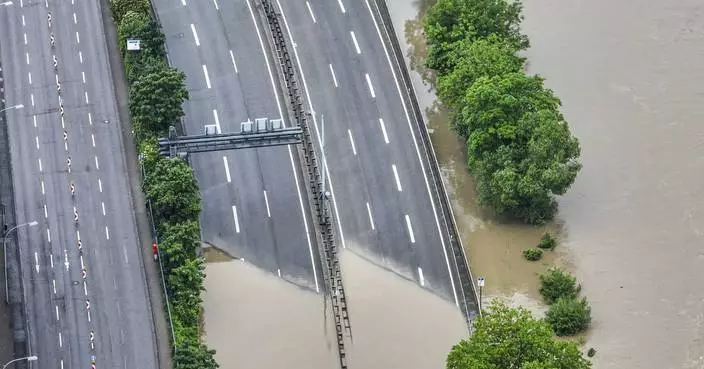WASHINGTON (AP) — President Joe Biden will announce his latest effort to broaden student loan relief next week for new categories of borrowers, according to three people familiar with the plans, nearly a year after the Supreme Court foiled his administration’s first attempt to cancel debt for millions who attended college.
Biden will detail the plan Monday in Madison, Wisconsin, where the flagship campus of the University of Wisconsin is located. The actual federal regulations — outlining who would qualify to get their student loan debt reduced or eliminated — are not expected to be released then, said the people, who were granted anonymity to detail a proposal not yet made public.
Much of the specifics that Biden will discuss Monday have long been telegraphed through a negotiated rulemaking process at the Department of Education, which has worked for months to hash out the new categories of borrowers. The president announced immediately after the Supreme Court decision that Education Secretary Miguel Cardona would undertake the process because he would have the power under the Higher Education Act to waive or compromise student loan debt in specific cases.
Still, the effort seeks to make good on Biden’s promise after the Supreme Court struck down his initial plan in June, a $400 billion proposal to cancel or reduce federal student loan debt that a majority of justices said required congressional approval. Biden called that decision a “mistake” and “wrong.”
And the fresh announcement on student loan relief, a vital issue for younger voters, could help energize parts of Biden's political coalition who have become disillusioned over his job performance — people whose support the president will need to defeat presumptive Republican presidential candidate Donald Trump this year.
The plan that Biden will detail is set to expand federal student loan relief to new yet-targeted categories of borrowers through the Higher Education Act, which administration officials believe puts it on a stronger legal footing than the sweeping proposal that was killed by a 6-3 court majority last year. The planned announcement from Biden was first reported by the Wall Street Journal.
“This new path is legally sound,” Biden said in June. “It’s going to take longer, but, in my view, it’s the best path that remains to providing for as many borrowers as possible with debt relief.”
Biden's latest attempt at cancellation is expected to be smaller and more targeted than his original plan, which would have canceled up to $20,000 in loans for more than 40 million borrowers. Details of the new plan have come into focus in recent months as the Education Department brought its ideas to a panel of outside negotiators with an interest in higher education, ranging from students to loan servicers.
“President Biden’s expected additional executive action will greatly reduce the burden of student loans for millions of Americans," Senate Majority Leader Chuck Schumer, D-N.Y., said Friday. "There is always more work to be done to alleviate the burden of student loan debt. And we will not stop until crippling student loan debt is a thing of the past.”
Through that process, the agency laid out five categories of borrowers who would be eligible to get some or all of their federal loans canceled. The plan is focused on helping those with the greatest need for relief, including many who might otherwise never repay their loans.
Among those targeted for help are individuals whose unpaid interest has snowballed beyond the size of the original loan. The proposal would reset their balances back to the initial balance by erasing up to $10,000 or $20,000 in interest, depending on a borrower's income.
Borrowers paying down their student loans for decades would get all remaining debt erased under the department's plan. Loans used for a borrower's undergraduate education would be canceled if they had been in repayment for at least 20 years. For other types of federal loans, it's 25 years.
The plan would automatically cancel loans for those who went to for-profit college programs deemed “low-value.” Borrowers would be eligible for cancellation if, while they attended the program, the average federal student loan payment among graduates was too high compared to their average salary.
Those who are eligible for other types of cancellation but haven't applied would automatically get relief. It would apply to Public Service Loan Forgiveness and Borrower Defense to Repayment, programs that have been around for years but require infamously difficult paperwork.
Under pressure from advocates, the department also added a category for those facing “hardship.” It would offer cancellation to borrowers considered highly likely to be in default within two years. Additional borrowers would be eligible for relief under a wide-ranging definition of financial hardship.
A series of hearings to craft the rule wrapped up in February, and the draft is now under review. Before it can be finalized, the Education Department will need to issue a formal proposal and open it to a public comment period.
The latest attempt at cancellation joins other targeted initiatives, including those aimed at public service workers and low-income borrowers. Through those efforts, the Biden administration says it has canceled $144 billion in student loans for almost 4 million Americans.
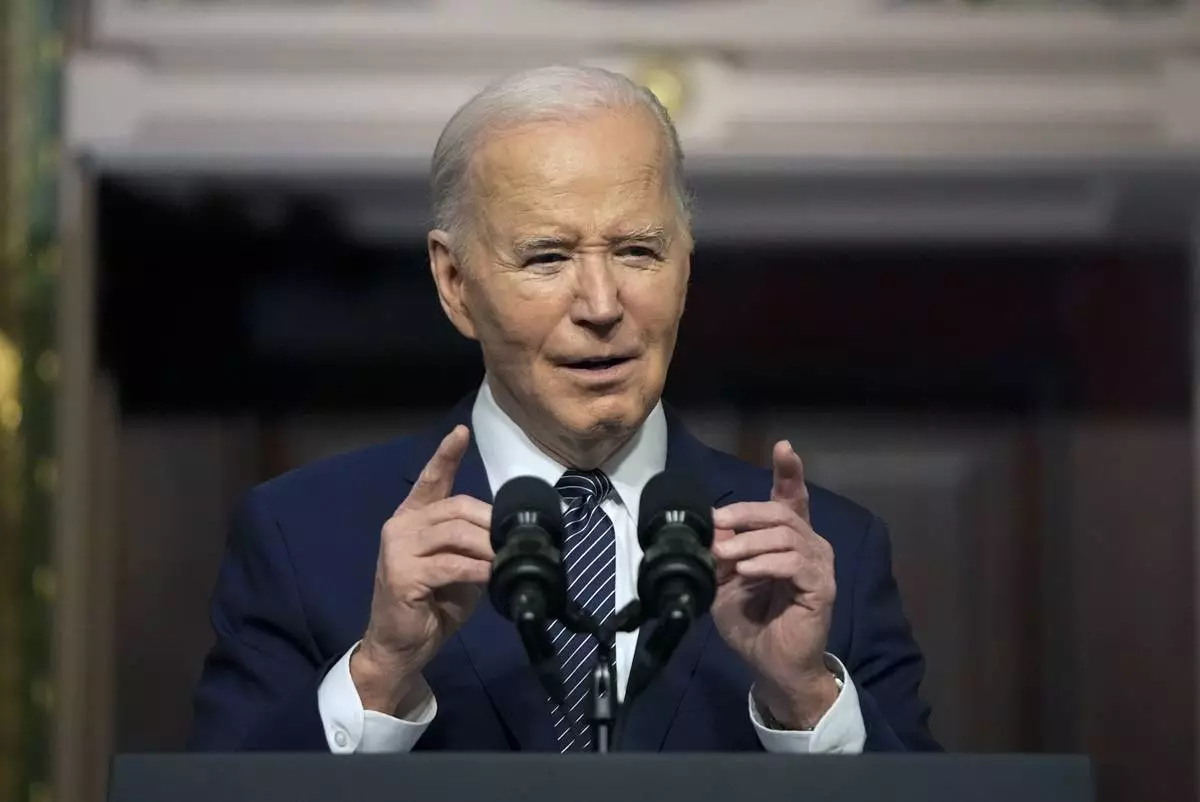
President Joe Biden speaks about lowering health care costs in the Indian Treaty Room at the Eisenhower Executive Office Building on the White House complex in Washington, Wednesday, April 3, 2024. (AP Photo/Mark Schiefelbein)
KYIV, Ukraine (AP) — A divisive mobilization law in Ukraine came into force on Saturday, as Kyiv struggles to boost troop numbers after Russia launched a new offensive that some fear could close in on Ukraine’s second-largest city.
The legislation, which was watered down from its original draft, will make it easier to identify every conscript in the country. It also provides incentives to soldiers, such as cash bonuses or money toward buying a house or car, that some analysts say Ukraine cannot afford.
Lawmakers dragged their feet for months and only passed the law in mid-April, a week after Ukraine lowered the age for men who can be drafted from 27 to 25. The measures reflect the growing strain that more than two years of war with Russia has had on Ukraine’s forces, who are trying to hold the front lines in fighting that has sapped the country’s ranks and stores of weapons and ammunition.
Ukrainian President Volodymyr Zelenskyy also signed two other laws Friday, allowing prisoners to join the army and increasing fines for draft dodgers fivefold. Russia enlisted its prisoners early on in the war, and personnel shortages compelled Ukraine to adopt the new, controversial measures.
Oleksii, 68, who runs a car repair shop in Kyiv, worries his business will have to shut down as he expects 70% of his workers will be mobilized. He asked that only his first name be used to allow him to speak freely.
“With the new law, people will be mobilized and we will have to shut down and stop paying taxes,” Oleksii told The Associated Press on Saturday. He said it's very difficult to replace workers because of their specialized skills. Most of them are already in the armed forces, he said, adding that the law is “unfair” and “unclear.”
Even essential municipal services will be affected. Viktor Kaminsky, the head of a municipal service department in Kyiv that fits households with heating and repairs utilities in public buildings, said he will struggle to replace mobilized staff and meet demand, even though the law allows him to retain half of workers deemed fit for service.
He said 60 of the 220 people working in Kaminsky's department will be eligible to be called up. “If they take 30 people from what we have, the problem is we don’t have anyone to replace them," he said.
“There are pros and cons to this law,” Kaminsky said. “It's hard to avoid the mobilization process now, compared to before when people were trying to get around it.” But, he said, it would be better if essential workers like his were granted more exemptions.
Ukraine has struggled for months to replenish depleted forces, as Russian troops are pushing ahead with a ground offensive that opened a new front in the northeast and put further pressure on Kyiv’s overstretched military. After weeks of probing, Moscow launched the new push knowing that Ukraine suffered personnel shortages, and that its forces have been spread thin in the northeastern Kharkiv region.
Russian President Vladimir Putin said on Friday during a visit to China that the Russian push aims to create “a buffer zone” rather than capturing Kharkiv, the local capital and Ukraine’s second-largest city.
Still, Moscow’s forces have pummeled Kharkiv with strikes in recent weeks, hitting civilian and energy infrastructure and prompting angry accusations from Zelenskyy that the Russian leadership sought to reduce the city to rubble. On Friday, Mayor Ihor Terekhov said that Russian guided bombs killed at least three residents and injured 28 others that day.
Moscow denies deliberately targeting civilians, but thousands have died or suffered injuries in the more than 27 months of fighting.
The U.S. last week announced a new $400 million package of military aid for Ukraine, and President Joe Biden has promised that he would rush badly needed weaponry to the country to help it stave off Russian advances. Still, only small batches of U.S. military aid have started to trickle into the front line, according to Ukrainian military commanders, who said it will take at least two months before supplies meet Kyiv’s needs to hold the line.
Rusyn is the head of recruitment for the 3rd Assault Brigade, one of the most popular among Ukrainian volunteers. He told AP that he saw a 15% increase in men joining the brigade, which fights in eastern Ukraine, in the past months. Most recruits are aged between 23-25, he said. For security reasons, he and his recruits asked to be identified by their call signs only.
“There is no alternative (to mobilization),” said Rohas, a 26-year old recruit. “One way or another, I believe that most men will end up in the ranks of the armed forces and by joining as a volunteer, you still get some preferences.”
“Those who are afraid of being mobilized are not the ones hostage to this situation, it's those (soldiers) who are standing in formations of three where there should be 10. Those guys are hostages to this situation and they should be replaced, so that’s why we are here," Rohas said.
Many Ukrainians have fled the country to avoid the draft since Russia’s all-out invasion in February 2022.
The Supreme Court last month said that 930 people were convicted of avoiding mobilization in 2023, a fivefold increase from the previous year.
Around 768,000 Ukrainian men aged 18-64 had been granted temporary protection in European Union countries as of last November, according to data from the bloc's statistical agency, Eurostat.
Kyiv has barred men under 60 from leaving the country since the start of the war, but some are exempt, including those who are disabled or have three or more dependents. The Eurostat data does not specify how many of the men who have qualified for protection belong to these categories, nor how many others reached the EU from Ukraine's Russian-occupied territories in the east and south.
Unable to cross the border legally, some Ukrainian men risk death trying to swim across a river that separates Ukraine from neighboring Romania and Hungary.
Late on Friday, Ukraine’s border service said that at least 30 people have died trying to cross the Tisza River since the full scale-invasion.
Romanian border guards days earlier retrieved the near-naked, disfigured body of a man that appeared to have been floating in the Tisza for days, and is the 30th known casualty, the Ukrainian agency said in an online statement. It said the man has not yet been identified.
Kozlowska reported from London. Associated Press writer Alex Babenko in Kyiv, Ukraine contributed to this report.
——
Follow AP’s coverage at https://apnews.com/hub/russia-ukraine

Newly recruited soldiers of the 3rd assault brigade train in Kyiv, Ukraine, Friday, May 17, 2024. A divisive mobilisation law in Ukraine came into force on Saturday, as Kyiv struggles to boost troop numbers after Russia launched a new offensive. (AP Photo/Efrem Lukatsky)

Newly recruited soldiers of the 3rd assault brigade train in Kyiv, Ukraine, Friday, May 17, 2024. A divisive mobilisation law in Ukraine came into force on Saturday, as Kyiv struggles to boost troop numbers after Russia launched a new offensive. (AP Photo/Efrem Lukatsky)

A newly recruited soldier of the 3rd assault brigade trains, in Kyiv, Ukraine, Friday, May 17, 2024. A divisive mobilisation law in Ukraine came into force on Saturday, as Kyiv struggles to boost troop numbers after Russia launched a new offensive. (AP Photo/Efrem Lukatsky)

Newly recruited soldiers of the 3rd assault brigade train in Kyiv, Ukraine, Friday, May 17, 2024. A divisive mobilisation law in Ukraine came into force on Saturday, as Kyiv struggles to boost troop numbers after Russia launched a new offensive. (AP Photo/Efrem Lukatsky)

Newly recruited soldiers of the 3rd assault brigade train in Kyiv, Ukraine, Friday, May 17, 2024. A divisive mobilisation law in Ukraine came into force on Saturday, as Kyiv struggles to boost troop numbers after Russia launched a new offensive. (AP Photo/Efrem Lukatsky)

Oleksii, 68, director of the auto repair shop poses for photo in Kyiv region, Ukraine, Saturday, May 18, 2024. A divisive mobilisation law in Ukraine came into force on Saturday, as Kyiv struggles to boost troop numbers after Russia launched a new offensive. (AP Photo/Alex Babenko)

A newly recruited soldier of the 3rd assault brigade trains, in Kyiv, Ukraine, Friday, May 17, 2024. A divisive mobilisation law in Ukraine came into force on Saturday, as Kyiv struggles to boost troop numbers after Russia launched a new offensive. (AP Photo/Efrem Lukatsky)

Smoke rises after a Russian attack in Kharkiv, Ukraine, Friday, May 17, 2024. (AP Photo/Evgeniy Maloletka)

People walk on a street while smoke rises after a Russian attack in Kharkiv, Ukraine, Friday, May 17, 2024. (AP Photo/Evgeniy Maloletka)

Foreign journalists report from an observation point while smoke rises after a Russian attack in Kharkiv, Ukraine, Friday, May 17, 2024. (AP Photo/Evgeniy Maloletka)



